
This case study demonstrates the application of "See the Unseen" research methodology to AI as a problem space.
The research was commissioned for an AI startup that had developed significant technical capability but lacked focus on UX/UI design.
The goal was to create a world-leading design strategy that rethinks how we design interfaces for AI applications, moving beyond developer-driven implementations to truly user-centered design.
The research insights here are not the 'truth', however contain some high level insights that may be useful for the development of AI design strategies.
Research Methodology (See The Unseen)
Participants: 150 total (50 per market segment)
UAE: 50% very positive toward AI
Australia: More optimistic than the US
USA: Most skeptical of all three markets
Markets: UAE, USA, and Australia
Key Findings:
1. Regional Differences in AI Acceptance
The UAE showed 30% more positive attitudes toward AI compared to the USA and Australia. I hypothesise this difference stems from government and media messaging around building a future high-tech society where AI plays a central role.
Regional Differences in AI Acceptance
AI Attitudes by Region:
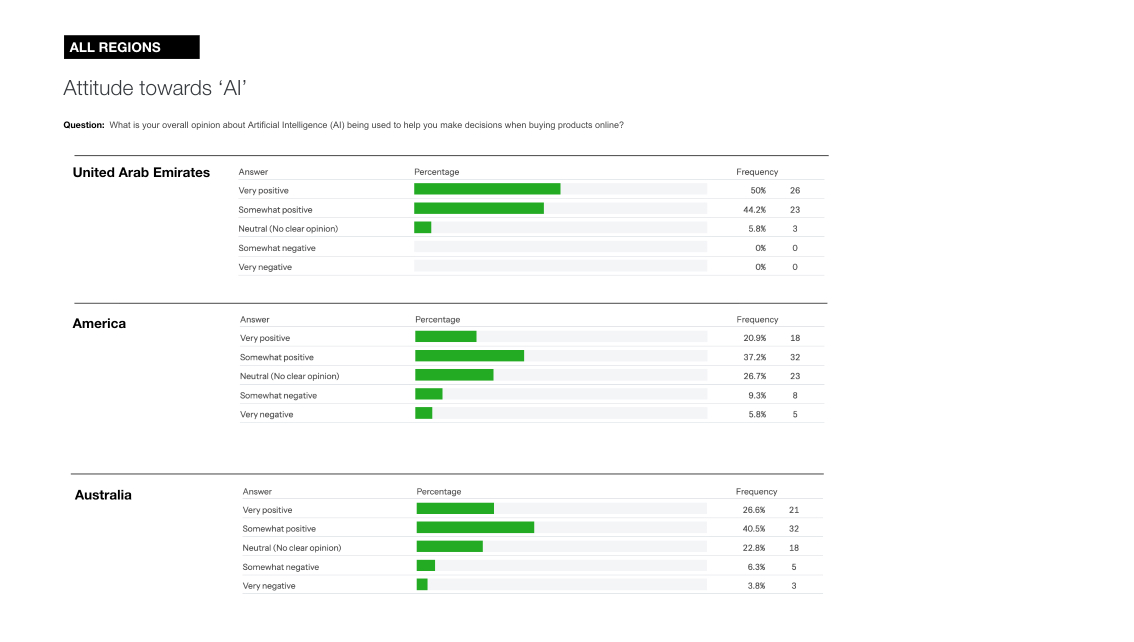
Primary Discovery:
'Digital Assistants Trained by Real Humans'
The most significant finding across all markets was that users prefer digital assistants trained by real humans rather than generic AI implementations.
Key characteristics of preferred digital assistants:
Trained on information the human has access to
Operating within the user's legal system
Using IP the trainer has rights to
Trainer remains directly accountable for outcomes
Requires validation and check-ins, especially during training
This model positions the AI assistant as a subset of a human rather than an incomprehensible global intelligence cloud.
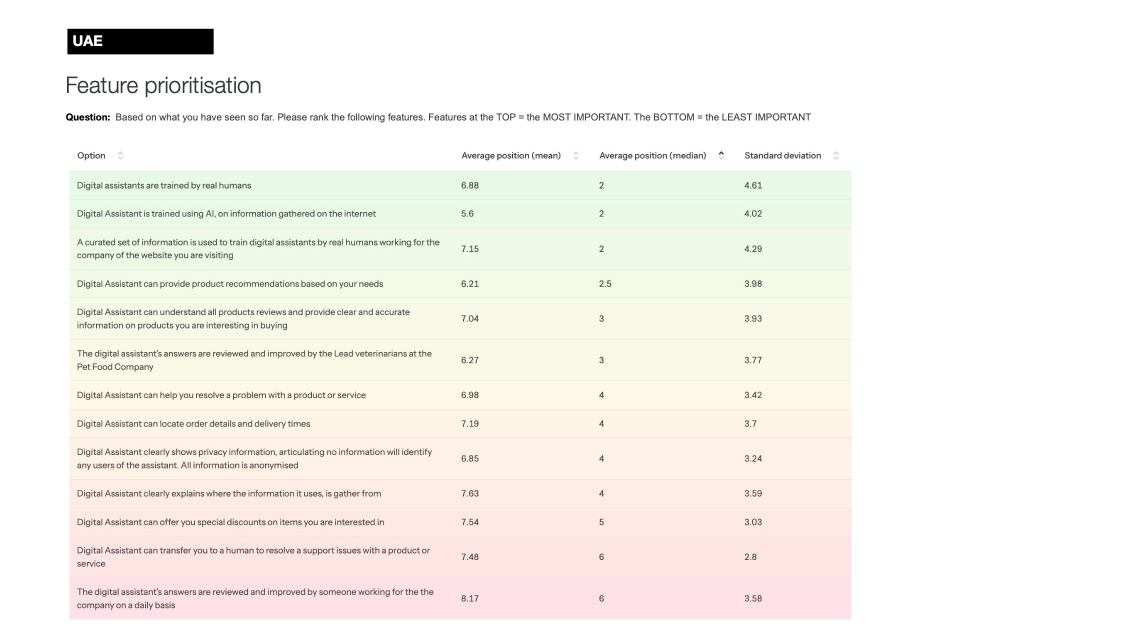
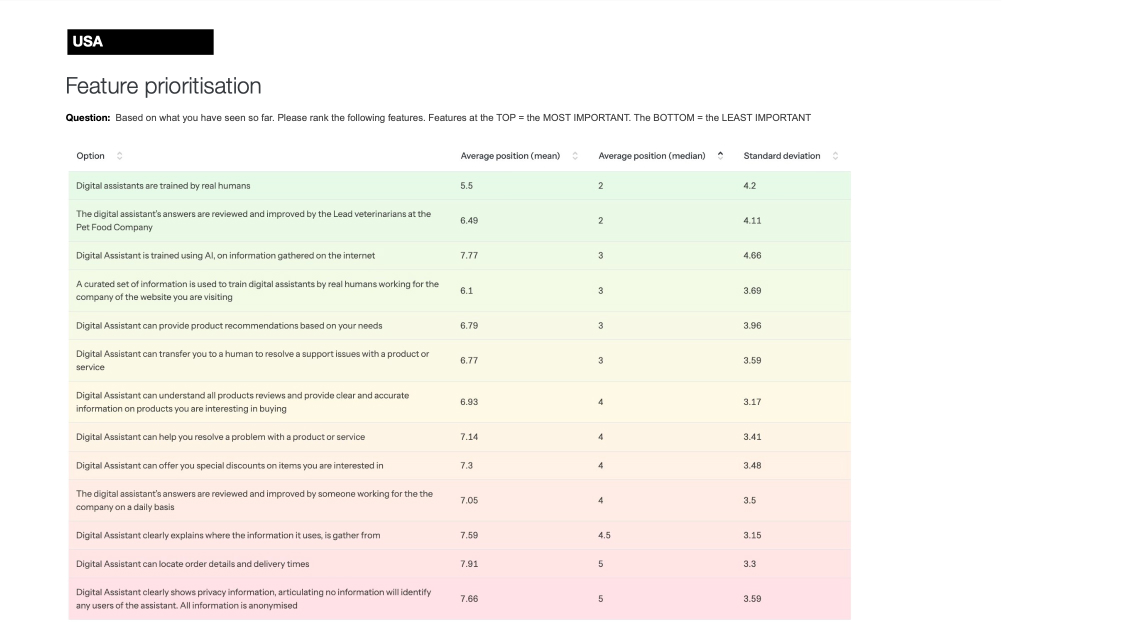
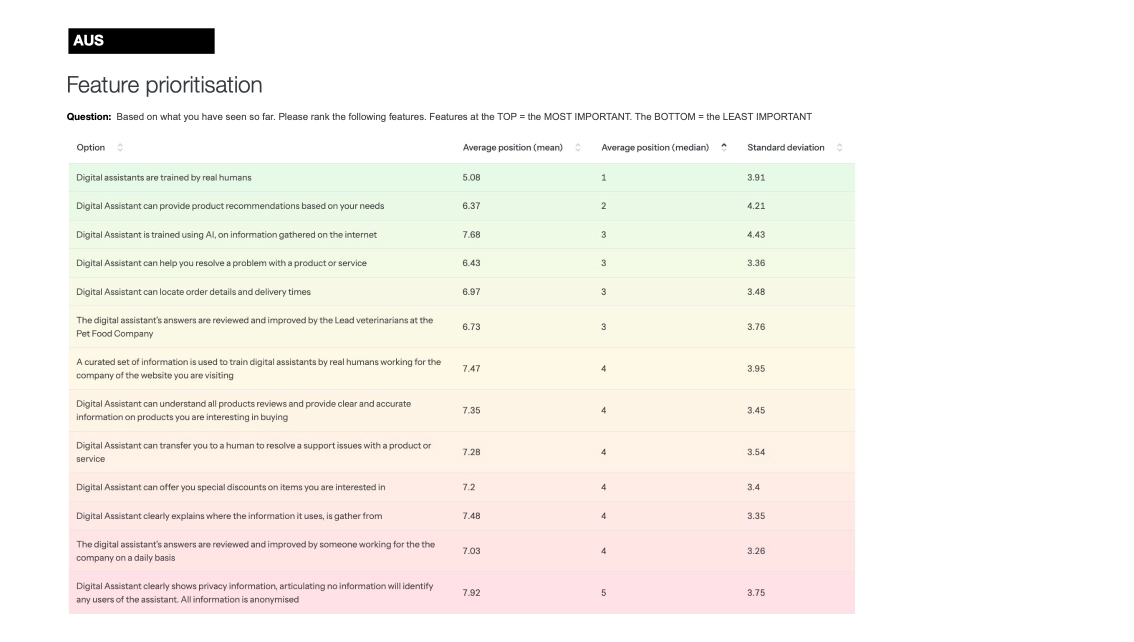
Feature Preference Testing
When testing different AI implementation approaches, researchers presented three options in the stimulus mockups:
"Ask our digital assistant Clara" vs. "Search using AI" vs. "No AI"
Note: Clara was the name given to the digital assistant in the research prototypes/mockups shown to participants.
UAE: 8% preferred no AI implementation (strong AI acceptance)
USA: ~50/50 split between Clara and no AI (high skepticism of "search using AI")
Australia: Higher preference for Clara than the US
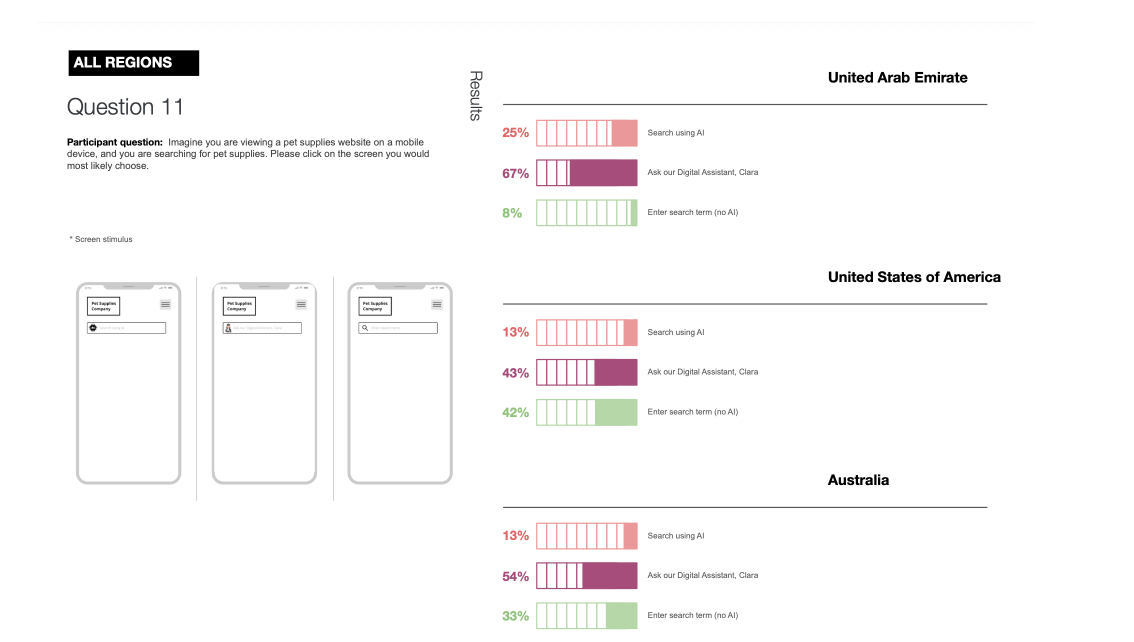
Suitable Product Categories
Most suitable for digital assistants:
Fashion (UAE #1)
Electronics (USA and Australia #1)
Food
Suitable Product Categories
Most suitable for digital assistants:
Fashion (UAE #1)
Electronics (USA and Australia #1)
Food
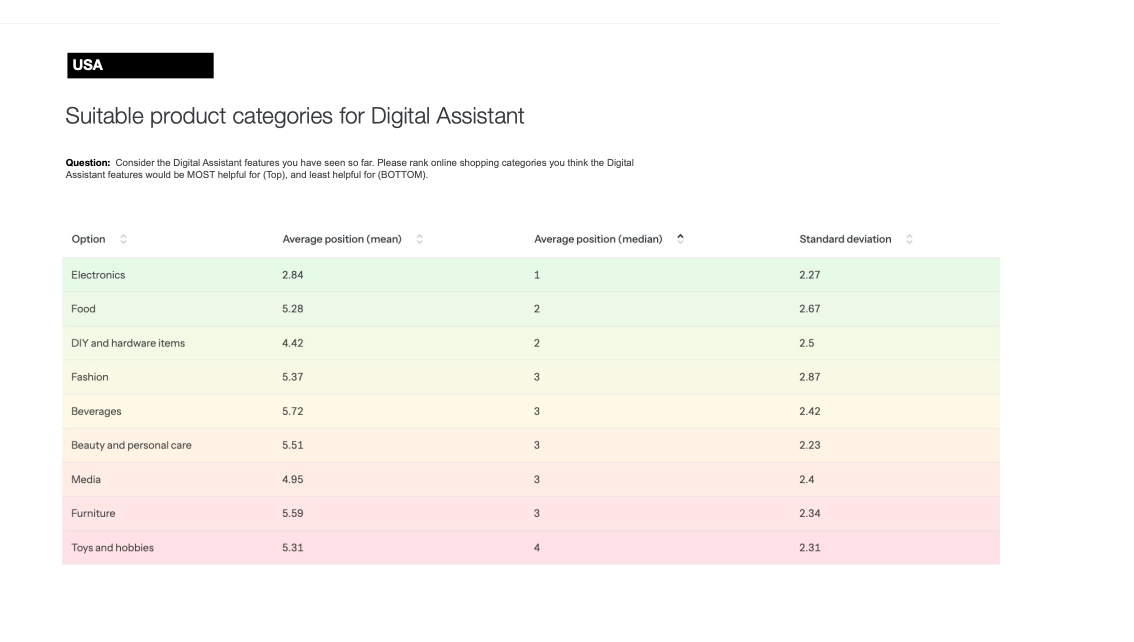

Strategic Implications
Market Entry: UAE presents the best opportunity for AI product launches due to high acceptance rates (Within the three markets tested)
Design Strategy: Focus on human-trained, accountable digital assistants rather than generic AI search implementations
Regional Adaptation: Customise messaging and features based on regional AI attitudes
Trust Building
Emphasise human oversight and accountability in AI system design
Conclusion
The research reveals that current AI implementations are largely developer-driven rather than user-centered.
The path forward requires designing AI systems that users can understand and trust—specifically, digital assistants that are trained by real humans who remain accountable for the outcomes.
This approach addresses fundamental user concerns about AI while providing a practical framework for building trustworthy AI interfaces.